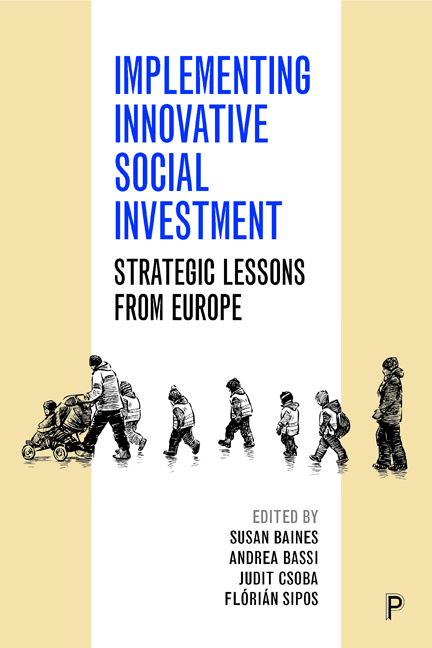Book contents
- Frontmatter
- Contents
- List of tables, figures, images and boxes
- Notes on contributors
- Acknowledgement
- one Social Investment in welfare: a sub-national perspective
- Part A Children and families: early intervention in people’s life courses
- Part B From a caring state to an investing state: labour market activation
- Part C Social solidarity and Social Investment
- Index
nine - The creation of a socially diverse neighbourhood in Utrecht, the Netherlands
Published online by Cambridge University Press: 21 April 2022
- Frontmatter
- Contents
- List of tables, figures, images and boxes
- Notes on contributors
- Acknowledgement
- one Social Investment in welfare: a sub-national perspective
- Part A Children and families: early intervention in people’s life courses
- Part B From a caring state to an investing state: labour market activation
- Part C Social solidarity and Social Investment
- Index
Summary
Introduction
The ‘Green Sticht’ project was developed between 1997 and 2002 in Utrecht, the fourth-largest city in the Netherlands. The small neighbourhood known as the Green Sticht was built in 2002/03 on a vacant lot of an old farm in the large new town extension of Leidsche Rijn before regular housing was constructed in the surrounding area. It combines a variety of residential and working functions, and mixes a group of people in a socially vulnerable position with people who want to live and work there out of idealism. The main objectives of the Green Sticht are to provide a safe haven and social support to homeless people in their process of reintegration, as well as a place to live for socially vulnerable people in general who are in need of a place in a neighbourhood where they are known, respected and actively involved in neighbourhood activities. In addition, the neighbourhood offers opportunities to work and meaningful daily activities for both local residents with a distance from the labour market and people with intellectual disabilities living elsewhere in the city.
The plans of the Green Sticht originate from the activities of the ‘Fringe’ (Rafelrand) civil society working group committed to realising concrete projects to help homeless people and those suffering from addiction. It is one of the projects that originated from a 1997 conference in Utrecht organised by the working group. Its charismatic chairman was Ab Harrewijn, a preacher and left-wing politician at that time, who died in 2002. He based his plans on insights from Emmaus Haarzuilens’ ‘living and working communities’ in the Netherlands (part of a solidarity-based movement acting against poverty and exclusion) and from homeless people themselves. The latter were represented by NoiZ (a self-organised group of homeless people) and by a non‑governmental organisation that offers shelter and support to the homeless in Utrecht called the ‘Tussenvoorziening’ (literally the ‘In-between facility’). At this conference, various stakeholders committed themselves to support the development of the Green Sticht project. The directly involved organisations (the Tussenvoorziening, NoiZ and Emmaus Haarzuilens) were joined by a social housing corporation (Juliana, later merged into the national corporation Portaal), and some aldermen of the municipality of Utrecht. Plans were developed between 1997 and 2002 by the Foundation of the Green Sticht, in which the Tussenvoorziening, NoiZ, Emmaus Haarzuilens and the association of the future residents participated.
- Type
- Chapter
- Information
- Implementing Innovative Social InvestmentStrategic Lessons from Europe, pp. 147 - 164Publisher: Bristol University PressPrint publication year: 2019

